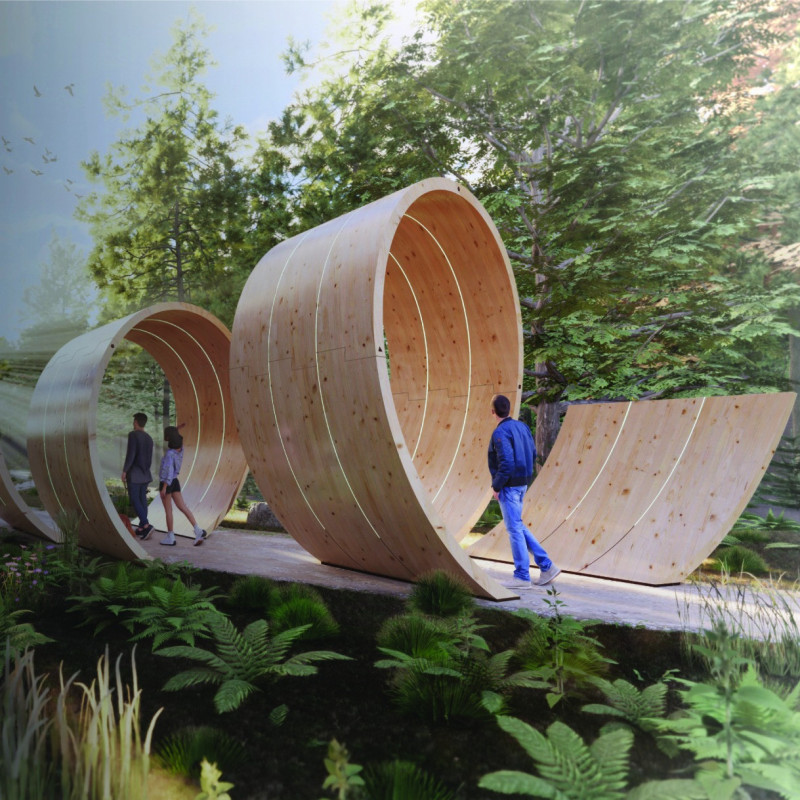5 key facts about this project
The structure embodies themes of sustainability and environmental stewardship, emphasizing its role as a space for interaction and learning. The pavilion functions not only as a shelter but as an exploration point for visitors, encouraging engagement with the natural environment. Its cyclical design promotes movement through the space, enhancing user experience and interaction.
Organic Design Approach
The unique approach of the Pare Pavilion lies in its organic form, echoing the shapes found in wood shavings. This design choice underscores the project’s commitment to integrating architectural form with ecological context. The loops of the pavilion create a flowing pathway that invites users to move through and connect with nature. This focus on circulation is not solely functional; it reflects a broader narrative about the relationship between people and the environment.
The incorporation of phosphorescent wood adds a distinctive element to the pavilion, allowing it to exhibit a luminous quality in the evening. This material choice serves both aesthetic and educational purposes, highlighting contemporary trends in sustainable design while creating a unique atmosphere. The usage of traditional joinery techniques with wooden pegs showcases craftsmanship and reinforces the pavilion's connection to its material composition.
Structural Integration and Materiality
The architectural element of CLT plays a central role in the pavilion’s structural integrity, offering strength while maintaining an environmentally conscious design. The project’s focus on sustainability is evident in the material selection, opting for renewable resources to reduce carbon footprint. The visible wooden joints and pegs accentuate the relationship between sections of the structure, contributing to the overall narrative of craftsmanship and design integrity.
In summary, the Pare Pavilion presents an architecture project that balances contemporary design and environmental responsibility. Each component of the structure is carefully considered to enhance user experience while respecting the natural surroundings. Readers interested in architectural plans, architectural sections, and architectural designs are encouraged to explore further details about the Pare Pavilion's unique ideas and design features.























